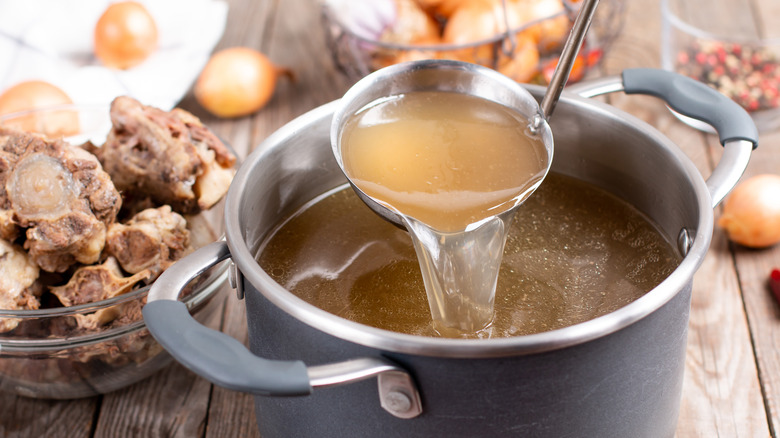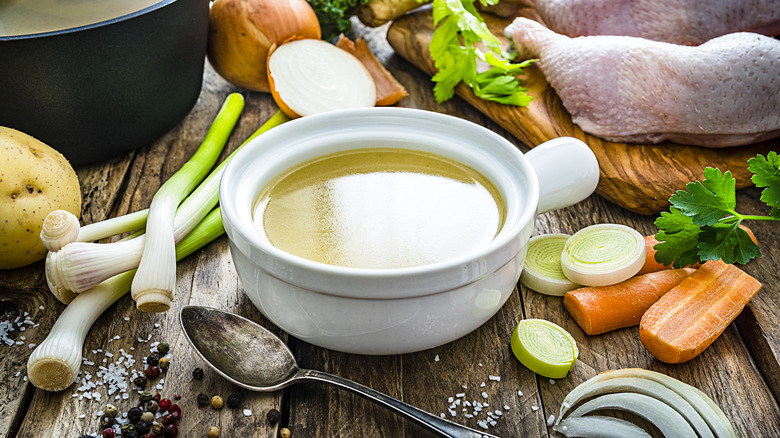The Last Thing To Make Before You Throw Away Used Stock Bones
In the chilly months, the weekly urge to make a pot of stock is not one to be ignored. Whether you need a collagen-rich chicken stock for a simple chicken noodle soup or a savory beef broth for a classic au jus recipe, knowing how to make the most of your ingredients ensures maximum flavor at no extra cost.
There are many different kinds of stock you can make, and a plethora of methods. You might keep your stock bones simmering for four hours on the stovetop, or let them linger in a slow cooker for a full 24 hours. But no matter how long you cook your stock bones, you should absolutely not discard them afterward. Bones are the gift that keeps on giving, and can be used more than once to impart flavor into your dishes. One classic way to reuse stock bones is called remouillage, a French culinary practice that involves making a second, weaker stock with used bones.
How to make remouillage
Remouillage means "re-wetting" in French, and that is precisely what you'll be doing. Once you've made your primary stock, you can freeze your leftover bones. Then, when you're ready to make your remouillage, simply add your used bones to a pot of water along with fresh mirepoix or other vegetables, and your choice of seasonings. Simmer this mixture for several hours.
Adding a bit of apple cider vinegar to your remouillage will help the bones break down and release more flavor. Since this stock will be weaker, you might want to reduce it to concentrate the flavor. It's also beneficial to use extra aromatics and seasonings like black peppercorns, bay leaves, or mustard seeds for additional depth. Incorporating a splash of wine can also enhance the taste. Another option is to use an existing stock instead of water to create a more concentrated and rich second stock.
Uses for remouillage
You can use any type of animal bones for remouillage, including beef, pork, lamb, veal, turkey, and chicken. Particularly for chicken, the thighs, legs, wings, and feet contain a lot of rich collagen that can add body and nutrients to your first and second stocks. Since the primary stock will have already started to break down the bones somewhat, you can snap the bones for the remouillage to extract more marrow. (It's best to do this after making your first stock but before freezing the bones.)
Remouillage can be used in the same ways you would use a primary stock, such as in soups, stews, sauces, or for cooking rice or pasta. However, its more subtle flavor is well-suited to dishes with a lot of additional flavorings. For instance, a boeuf bourguignon or a bowl of phô, which are strongly flavored with ingredients like red wine and fish sauce, are dynamic enough that your remouillage won't come across as bland. Save your primary stock for dishes where the stock's flavor will really shine through.



